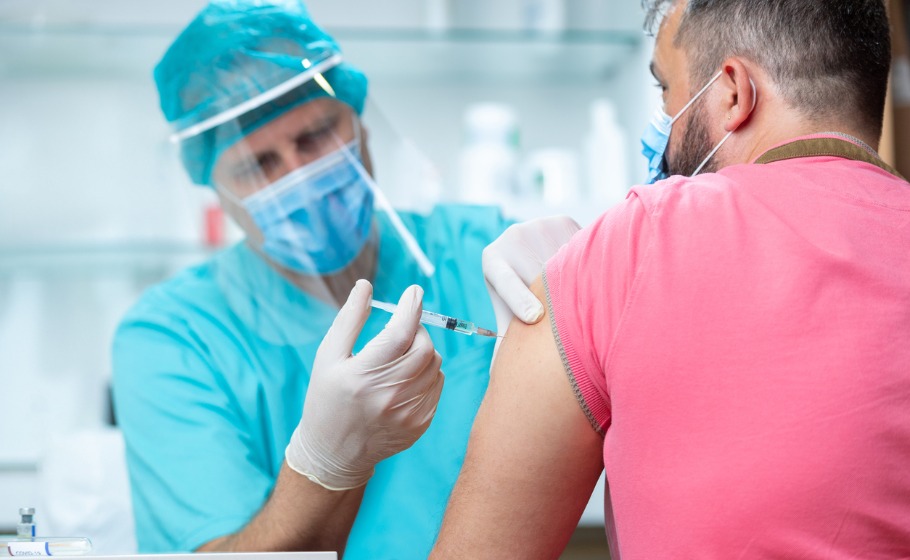
Vaccine for all by December-end: Take a look at what the data says

BJP chief J P Nadda on Wednesday (May 19) said that COVID vaccine will be available for all in India by the end of December. He said the calendar has been set for the schedule. He was taking stock of the COVID situation in Rajasthan via a virtual meeting with the party cadre in the state.
Take a look at the current status and projection of the vaccination in India based on official data provided by the Central government:
Status of vaccination
According to the official data provided by the Health Ministry, only 3.50 per cent of the total population has received both doses of the vaccine as of May 20. The share of the population to have received at least one jab is about 12 per cent for the same period. A total of 18 crore doses have been administered across the country in the last four months.
Complete vaccination in India would mean administering about 242 crore doses (considering a population of about 121 crore). However, at the current speed, this would take at least two years to inoculate just one dose. A total of 12 lakh doses were administered on May 20 while the daily vaccination average is about 15 lakh doses as of May 20. Apart from inoculation, there are other factors such as vaccine availability and infrastructure development that could help increase the pace of the vaccination.
The current population coverage by the states in India shows a very unsatisfactory picture of the distribution of vaccines. A total of 10 states have covered more than 20 per cent of the population with the first dose as of May 20. These include four states and six Union Territories, including the national capital Delhi. Bigger and worst-affected states such as Maharashtra (14.01 per cent), Karnataka (14.56 per cent) and Gujarat (18.27 per cent) are still struggling to reach that mark. On the other hand, other big states like Uttar Pradesh (6.05 per cent) and Tamil Nadu (7.14 per cent) haven’t managed to cover even 10 per cent population for the first dose.
If we consider complete vaccination (both doses taken), the worst picture emerges. Lakshdweep, Ladakh and Tripura are the only places to have completed vaccination of more than 10 per cent of their population by May 20, after four months of the vaccination drive. A total of 24 states and Union Territories out of 36 have less than 5 per cent coverage. Bihar (1.63 per cent) and Uttar Pradesh (1.65 per cent) are the worst performers in the list.
The Constraints
The data shows that the overall rate of vaccination is stalling in India for the last few weeks. The shortages are expected to continue until at least July-end due to production deadlines given by the manufacturers, shows the data.
A total of 567 public health practitioners as well as economists, workers’ unions, human rights groups, student groups and civil society organizations have written to Prime Minister Narendra Modi requesting his intervention in issues involved in the vaccination drive.
The joint policy brief and analysis by Oxfam India and Forum for Medical Ethics Society (FMES) has highlighted several flaws in India’s current COVID vaccination strategy. These include failure to adequately explore compulsory licensing of the vaccine along with the differential pricing (for the Centre and states). It added that the differential pricing would force India’s poorer and more populous states to pay relatively more. Further, it cited a disproportionate allocation of vaccines to states as one of the constraints in speeding up the process.
“The support for India’s request for a patent waiver at World Trade Organization (WTO) is growing. The Indian government needs to show leadership domestically, by lifting patents to its own vaccine and follow its own National Vaccine Policy by ensuring equitable access to everyone to the vaccine but prioritizing the vulnerable and excluded,” said Amitabh Behar, Chief Executive Officer, Oxfam India in his official statement.
A ray of hope
A COVID19 task force in India on Thursday estimated that the country will receive more than 2 billion (216.5 crores) doses of various vaccines by the end of the year. Dr. V K Paul of Niti Aayog said the government’s estimate is based on the manufacturing data provided by the vaccine companies.
The Serum Institute’s Covidshield (75 crore doses) would form the biggest chunk of the vaccines in India. It is followed by Bharat Biotech’s Covaxin (55 core doses) and Russia’s Sputnik V (15.6 crore doses) which will be provided until December in batches. Apart from these, five other vaccines would also be added to India’s cart.

